Apr 07, 16 · Assessment of consciousness 1 Assessment of consciousness Marwa Elhady lecturer of pediatrics Alazhar University 16 2 STIMULUS RESPONSE Assessment of level of consciousness start softly and then more loudly Level of consciousness is the most sensitive indicator of changes in the neurological state of the patient 3Oct 09, · An alternative to the AVPU scale to assess a patient's level of consciousness is the Glasgow Coma Scale How to use AVPU Knowing the patient's level of consciousnessStart studying Nursing 142 Levels of Consciousness terms Learn vocabulary, terms, and more with flashcards, games, and other study tools
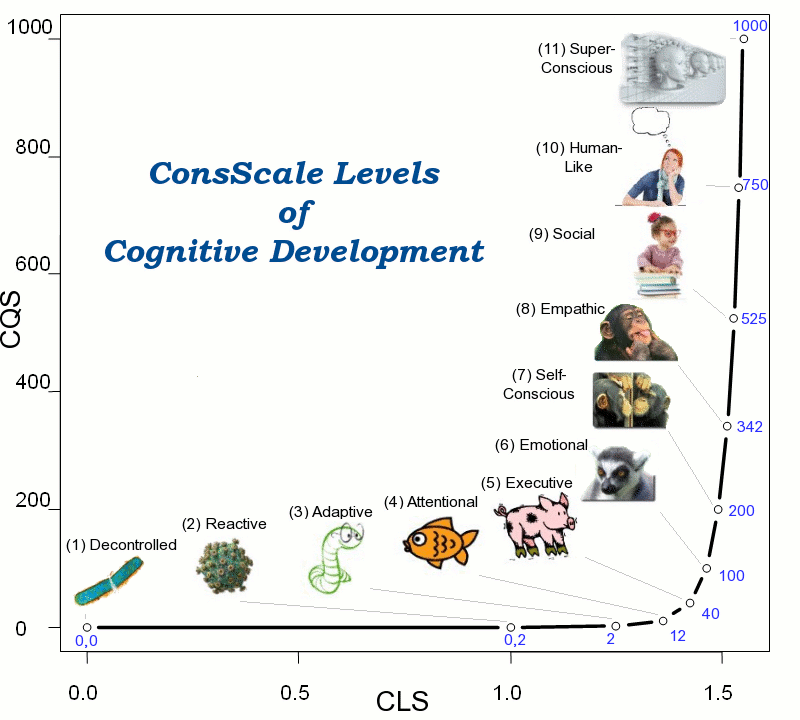
Conscious Robots Com Consscale A Machine Consciousness Scale
How to assess conscious level
How to assess conscious level-¾Review Neurological Assessment ¾Discuss the basic neuroanatomy and physiology ¾Describe the pathophysiology, management and nursing interventions of ¾Hydrocephalus ¾Cerebrovasculardisease ¾Meningitis ¾Seizures/status epilepticus ¾Head/Spinal Cord Injury ¾Neuromuscular Disorders Basic Neurologic Exam •Level of consciousnessAssessment tool The Chart has been developed to reduce the amount of variation in chart design and to improve consistency in assessment skills and interpretation of assessment findings The Chart complies with the Between the Flags program indicates the level of consciousness



Nurs 301 Health Assessment Exam Review 2 Multiple Choice Test Bank Chapter 5 To Chapter 29 With Explanations Mscs A Guide Nevada State College
The following topics are part of the routine daily assessment of most patients As you read and review each system, be aware of the possible abnormalities of the mental status examination Neurological Assessment Changes in level of consciousness;Mar 27, 18 · Assess Level of Consciousness An individual's level of consciousness can deteriorate due to many different reasons, such as head injuries, increased intracranial pressure, haemorrhage, or lesions and tumours Determining the level of consciousness depends on the individual you are assessing and can be easy or difficultSimple bedside assessment of level of consciousness comparison of two simple assessment scales with the Glasgow Coma scale* A F McNarry1 and D R Goldhill2 1 Research Registrar, 2 Senior Lecturer and Honorary Consultant in Anaesthesia and Critical Care Medicine, Department
The Glasgow Coma Scale is widely accepted as a measure of impaired consciousness both in clinical practice and in research In its standard form, the scale is inapplicable to infants and children below the age of 5 years We have devised a paediatric coma scale, which recognises that the expected noCheck out our Neuro Course at https//academyNURSINGcom/lesson/neuro0001courseintroduction/How to assess a patients level of consciousness as a nurseJan 19, 12 · 15 The combined level of consciousness of the group of individuals representing the 130 countries315 A quick interpretation of the last five questions The combined level of consciousness of the group is 315, the same level as the statement that Mr Martinez read, so they probably did write it
45 questions, one for language selection, 19 for participant characteristics (educational level, years of experience, level of specialisation and work setting) and five for evaluation of the questionnaire The remaining questions (Supporting Information Appendix S1) were related to consciousness assessment where conditional logic ensuredJul 23, 18 · When documenting your patient's level of consciousness, you'll notice you have a LOT of options to choose from Your patient can be alert, confused, in a coma and anything in between Knowing the difference between each level of consciousness will help you chart accurately and communicate your patient's condition with precisionAssessment of consciousness A variety of scales have been devised to describe patients' level of consciousness (Barker 02) However, the Glasgow Coma Scale (GCS) (Jennett and Teasdale 1977) is the most universally accepted tool, which decreases the subjectivity and confusion associated with assessing levels of consciousness (Hickey 03b)



Ingenius Level Of Consciousness Assessment Avpu The Avpu Scale Is A System Where You Can Measure And Record A Patient S Responsiveness To Indicate Their Level Of Consciousness It Is A Simplification



Seven Levels Of Leadership Consciousness
CONSCIOUSNESS ASSESSMENT Consciousness The state of being aware of physical events or mental concepts Conscious patients are awake and responsive to their surroundings Level of consciousness The degree of arousal and awareness A manifestation of altered consciousness implies an underlying brain dysfunctionIt is currently the leading cause of death and disability in adolescents and young adults, hence a thorough and accurate clinical assessmentLevel of consciousness should also be assessed upon initial contact with your patient and continuously monitored for changes throughout your contact with the patient a AVPU The AVPU scale is a rapid method of assessing LOC The patient's LOC is



Nurs 301 Health Assessment Exam Review 2 Multiple Choice Test Bank Chapter 5 To Chapter 29 With Explanations Mscs A Guide Nevada State College



The Mental Status Examination American Family Physician
Richer & Tell, 03) For the first four months, patient level of consciousness was assessed using coma or low functioning assessment scales, and for the ensuing year and a half, Addenbrooke's Cognitive ASSESSING LEVEL OF CONSCIOUSNESS IN VS 309The nurse is doing a neurologic assessment on a child whose level of consciousness has been variable since sustaining a cervical neck injury 12 hours ago The MOST appropriate nursing assessment in this case is A reactivity of pupils B doll's head maneuver C oculovestibular response D funduscopic examination to identify papilledemaJun 28, 08 · Each of the five examples includes an assessment of the central nervous system or level of consciousness, although the methods used are not identical 37 These scores have yet to be scientifically validated;



Ten Point Guide To Mental State Examination Mse In Psychiatry



Assessment And Monitoring Of Pain Current Tools
Level of consciousness Vigilant or lethargic or stupor or coma during 3 day assessment CAMCMS Active Term Description This term is the CMS Assessment adaption of question 4 on the Confusion Assessment Method (CAM) "Altered level of consciousness Overall, how would you rate this patient's level of consciousness?Jan 06, 21 · Introduction Head injury is one of the most common presentations to emergency departments worldwide, accounting for 14 million A&E attendances in the UK alone every year The clinical outcomes from head injury can be significant;However, we have shown the importance of neurological assessment in identifying patients who might require escalation to a critical



Ati Management Emergency Care Situations Medical Surgical Nursing Assessment And Management Of Clinical Problems Testbank Questions And Answers With Explanations Latest Update 100 Correct Download To Score A



Words Used To Describe Level Of Consciousness Download Table
Jul 14, 16 · Neurological Assessment Joanne V Hickey The purposes of this chapter are (1) to provide an overview for establishing and updating a database for a hospitalized neuroscience patient, and (2) to provide a framework for understanding the organization and interpretation of data from the systematic bedside neurological assessment Some content that appears inInstructions for this free level of consciousness test For each question, choose one answer which best describes your situation and click on the box next to that answer If none of the options fit, leave the question blank 1 I am most comfortable being aEvaluate level of orientation if the patient is alert Evaluate level of responsiveness if the patient is not alert Assess level of consciousness



Solved Which Nursing Assessment Finding Alerts The Nurse Chegg Com



Levels Of Consciousness
Scale, comprised of 4 grades of consciousness, is the simplest and the fastest method for assessment of neurologic status (1,11) Nonetheless, its value has been limited by the broad range of definitions for each grade This prompted us to assessment of consciousness levelOct 18, 09 · The single most important assessment Evaluation of level of consciousness (LOC) and mentation are the most important parts of the neuro exam A change in either is usually the first clue to a deteriorating condition The following terms are commonly used to describe a decreased LOC, so it helps to be familiar with them Full consciousnessAnd AVPU Alert, responds to Voice, responds to Pain, Unresponsive) compared to each other and also to the more complicated Glasgow Coma Scale (GCS)



Conscious Robots Com Consscale A Machine Consciousness Scale



Phsw Procedural Sedation Post Test Answer Key For The Following Questions Circle The Letter Of The Correct Answer S Or The Word True Or False Pdf Free Download
Apr 27, 18 · The next two levels of consciousness are patients who are alert but are NOT oriented People who are confused can't answer all of the orientation questions They might be alert and oriented times 1 or 2, or even 0 They have difficulty following commands and their thought processes tend to be slow They may even have memory lossThe Glasgow Coma Scale (GCS) consists of a threepart assessment eye opening, verbal response, and motor response Numeric values of 1 through 5 are assigned to the levels of response in each category The sum of these numeric values provides an objective measure of the patients level of consciousness (LOC)The GCS should be



Nclex Rn Practice Set Flashcards Quizlet
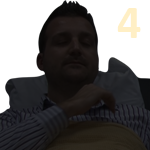


Rlo Assessment Of A Patient S Level Of Consciousness
Neurological assessment is an essential component of early warning scores used to identify seriously ill ward patients We investigated how two simple scales (ACDU Alert, Confused, Drowsy, Unresponsive;Once the level of consciousness is determined, a careful check for hints as to the cause of the alteration in level of consciousness should be undertaken In most instances the history (which can be obtained from the patient or those who accompany him, or from available medical records) is more valuable than is the examinationMar 22, 21 · Consciousness is usually evaluated along a continuum from alert to comatose Examiners evaluate level of consciousness as well as degree of orientation, because although the two concepts are related, they are not identical As examiners observe clients' responses and behaviors during an interview, they select a descriptor of consciousness



European Academy Of Neurology Guideline On The Diagnosis Of Coma And Other Disorders Of Consciousness Kondziella European Journal Of Neurology Wiley Online Library



Recommended Avpu Consciousness Level And Sedation State Download Table
ACUTE ASSESSMENT SCALES GLASGOW COMA SCALE (GCS) • Identifies ocular, verbal, and motor response to examination • Tool is used to communicate the level of consciousness (LOC) of patients with an acute brain injury • The scale was developed to complement and not replace assessments of other neurological functions • Strength Fast andJul 08, 08 · Level of consciousness It is not possible to directly assess the level of consciousness it can only be assessed by observing the patient's behavioural response to different stimuli During the initial rapid assessment of the critically ill patient, it is helpful to use the AVPU scale, with an examination of the pupils;Registered users can save articles, searches, and manage email alerts All registration fields are required



Chapter 9 Patient Assessment National Ems Education Standard



Palliative Performance Scale Pps Hospice Care Referrals Vnsny
Mar 01, 03 · Delirium is characterized by an acute change in cognition and a disturbance of consciousness, usually resulting from an underlying medical condition or from medication or drug withdrawal DeliriumLevel of consciousness, general patient survey, and vital signs Level of consciousness Components of level of consciousness include Assess level of consciousness ;Mar 08, 19 · Lack of consciousness has a major impact on medical decision making, particularly withdrawal of lifesustaining therapies Indeed, many prognostication tools (eg, following cardiac arrest, intracranial hemorrhage, subarachnoid hemorrhage) attribute a huge weight on the level of consciousness (usually crudely assessed by the GCS)



The National Institutes Of Health Stroke Scale Nihss Grepmed


Evolve The Organization By Measuring And Developing Its Consciousness Management Innovation Exchange
In fact, level of consciousness is THE most basic and sensitive indicator of altered brain function If we have a patient who is awake and alert for the 0700 assessment, but becomes lethargic or somnolent as the day progresses, this tells us that something is most definitely NOT RIGHT!This episode presents an approach to shock in a pediatric population This podcast is written by Dustin Jacobson, a 3 rd year pediatrics resident from the University of Toronto, with the help of Dr Suzanne Beno, a staff physician in the division of Pediatric Emergency Medicine at the University of Toronto At the end of this podcast, listeners will be able to define shock, understand it'sRestlessness, listlessness, confusion, disorientation, others



Avpu Scale Studocu



Chapter 9 Patient Assessment National Ems Education Standard
Mar 05, 17 · SAMPLE history is an mnemonic acronym to remember key questions for a person's medical assessment The five vital signs that rescuers will be monitoring is level of consciousness, breathingMay 13, · Medical illness, traumatic brain injury, alcohol intoxication, drugs, and poisonings may all lead to aberrations in a patient's neurological and physiological status in ways that cause an abnormal level of consciousness AVPU is a straightforward scale that is useful to rapidly grade a patient's gross level of consciousness, responsiveness, or mental status



Rapid Id Glasgow Coma Scale Pain Scale
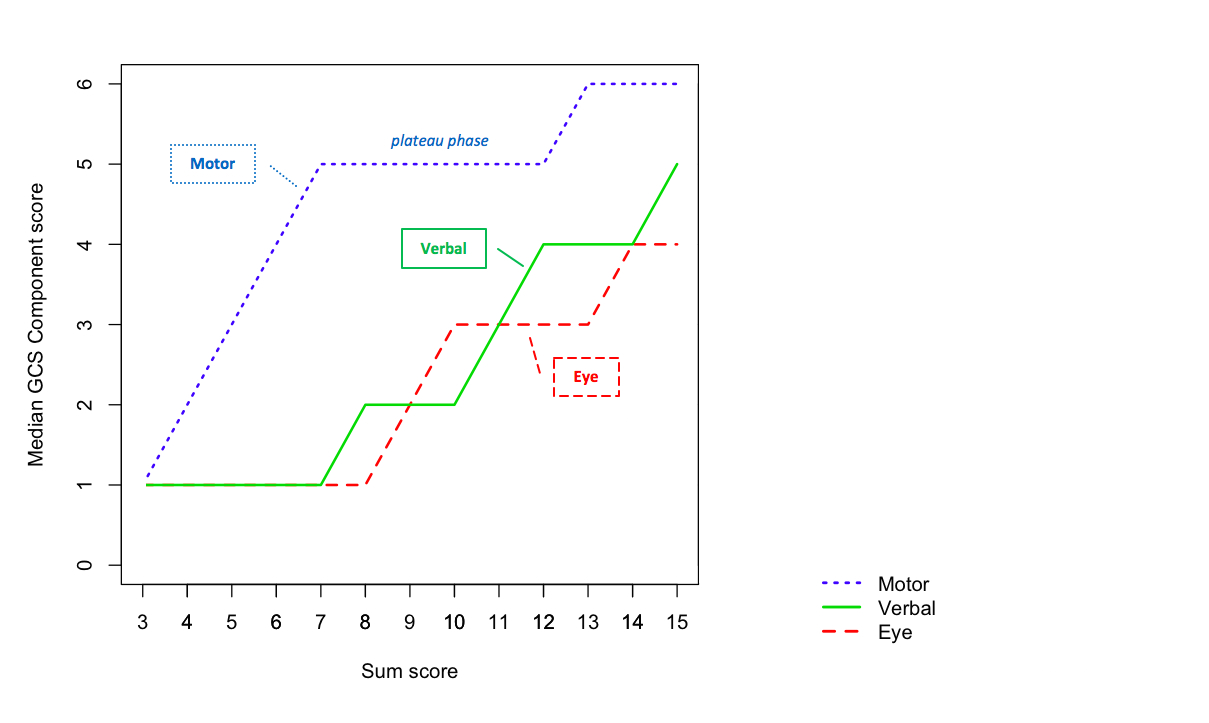


Faq Glasgow Coma Scale
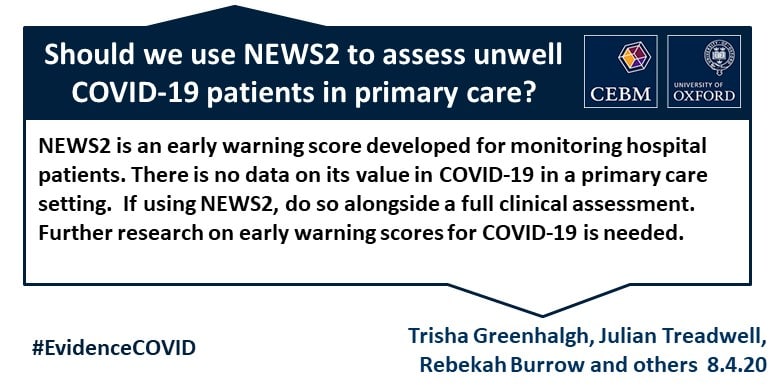


News Or News2 Score When Assessing Possible Covid 19 Patients In Primary Care The Centre For Evidence Based Medicine
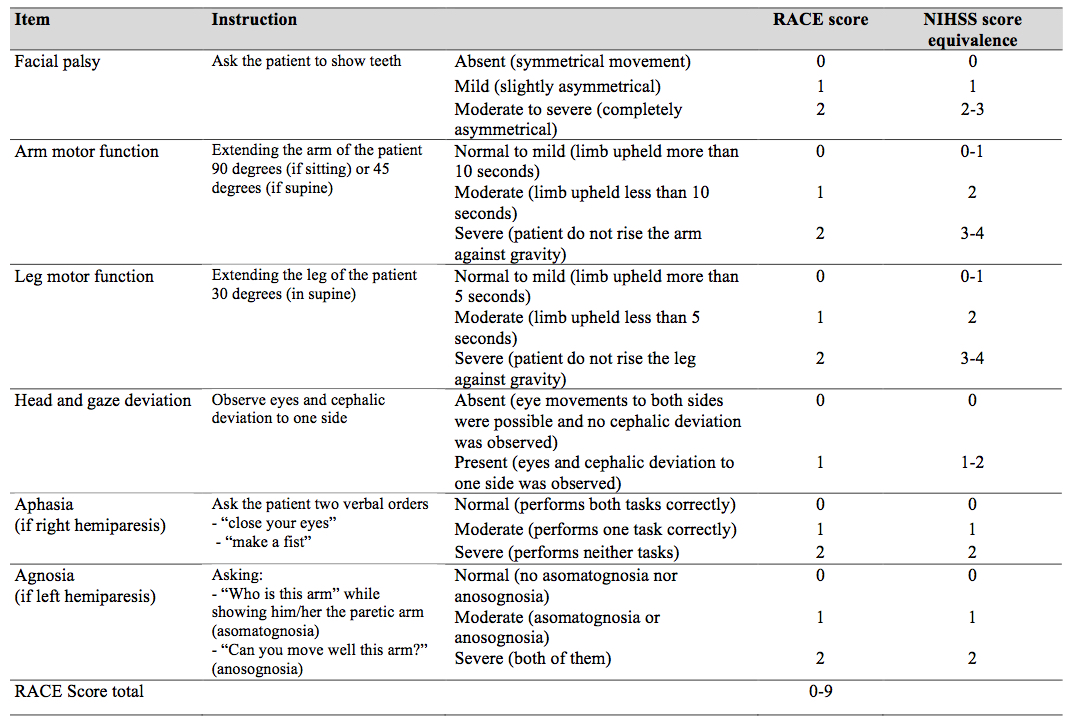


Stroke Assessment Physiopedia



1 5 Assessing Level Of Consciousness Taking Vital Signs



Nursing Health Assessment Mnemonics Tips Nurseslabs



Assessment And Monitoring Of Pain Current Tools
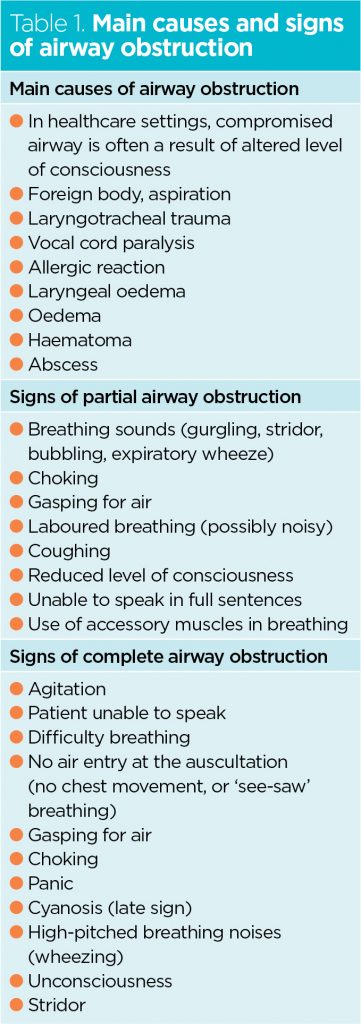


Performing An A G Patient Assessment A Step By Step Guide Nursing Times



Sedation Agitation Scale An Overview Sciencedirect Topics



Management Of Clients With Altered Level Of Consciousness



How To Triage The Veterinary Nurse
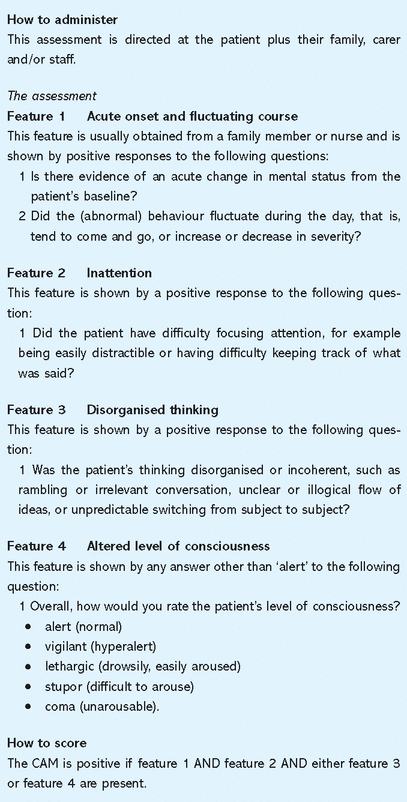


Cognitive Impairment In Older Adults A Guide To Assessment Rcp Journals



14 List Component Of Primary Assessment 2 Explain Initial General Impression 3 List Level Of Consciousness 4 Discuss Abcs Airway Breathing Ppt Download



Design And Validation Of A Prehospital Scale To Predict Stroke Severity Stroke
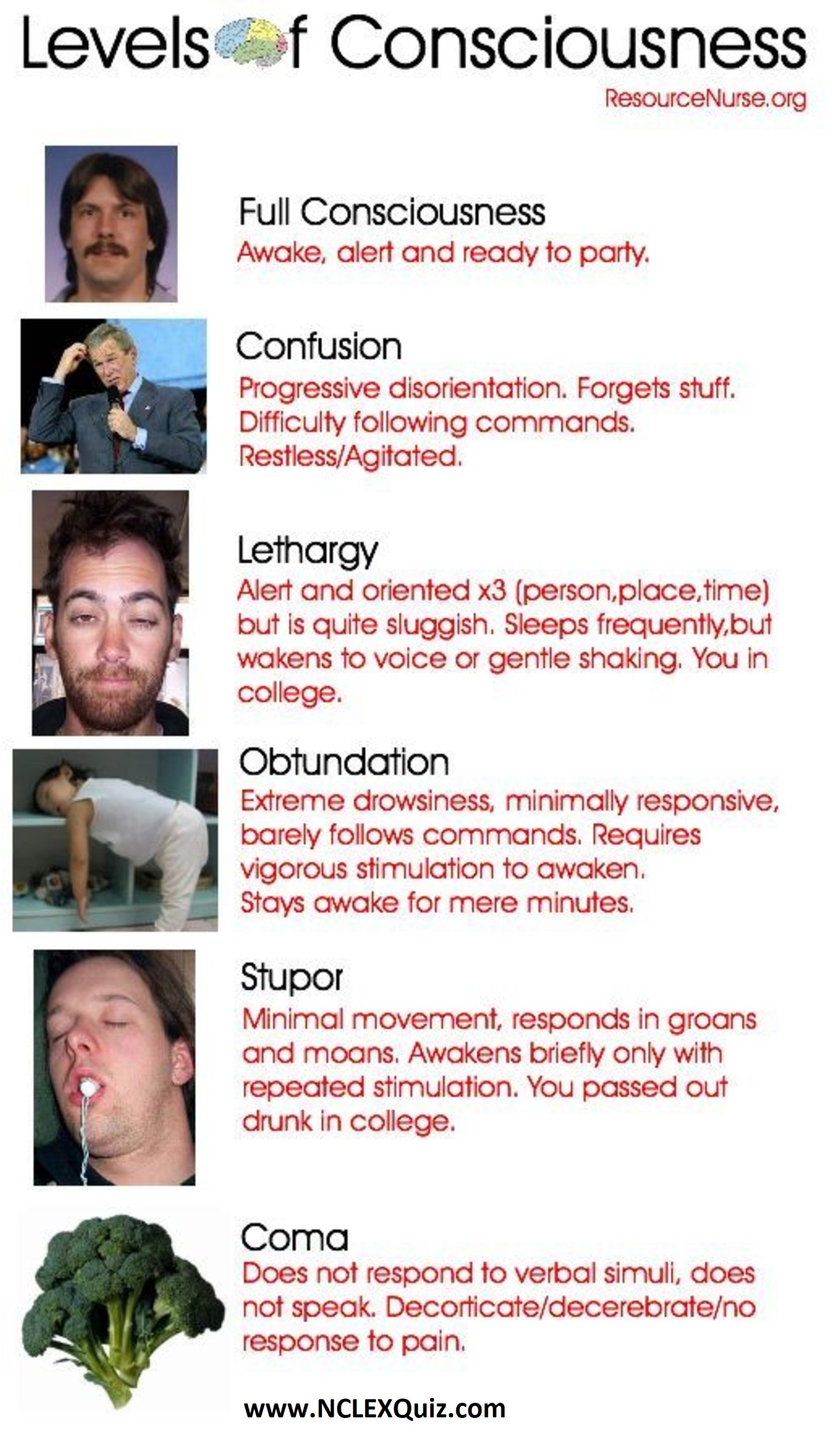


Documenting Levels Of Consciousness Nursing Nclex Quiz
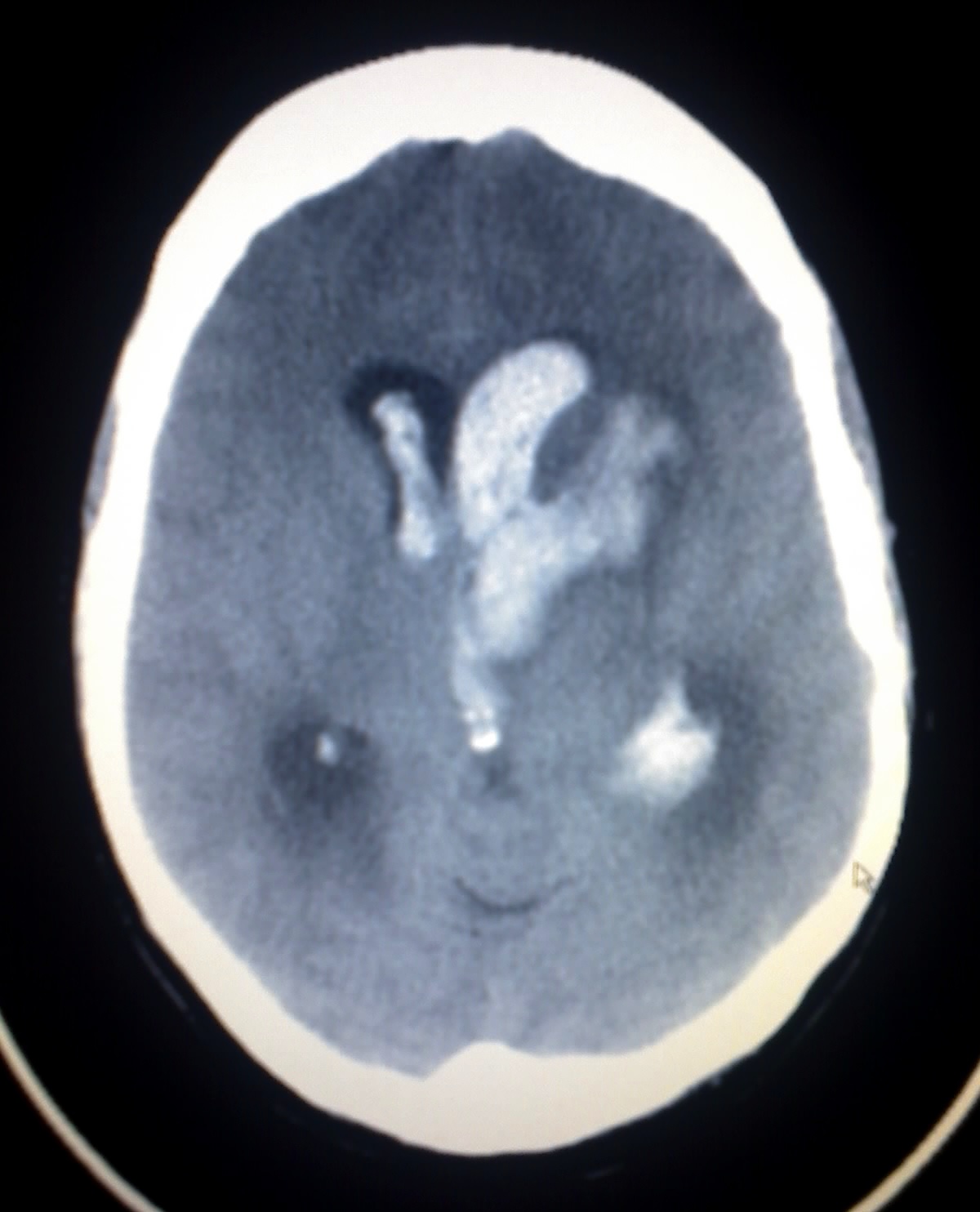


Altered Level Of Consciousness Wikipedia
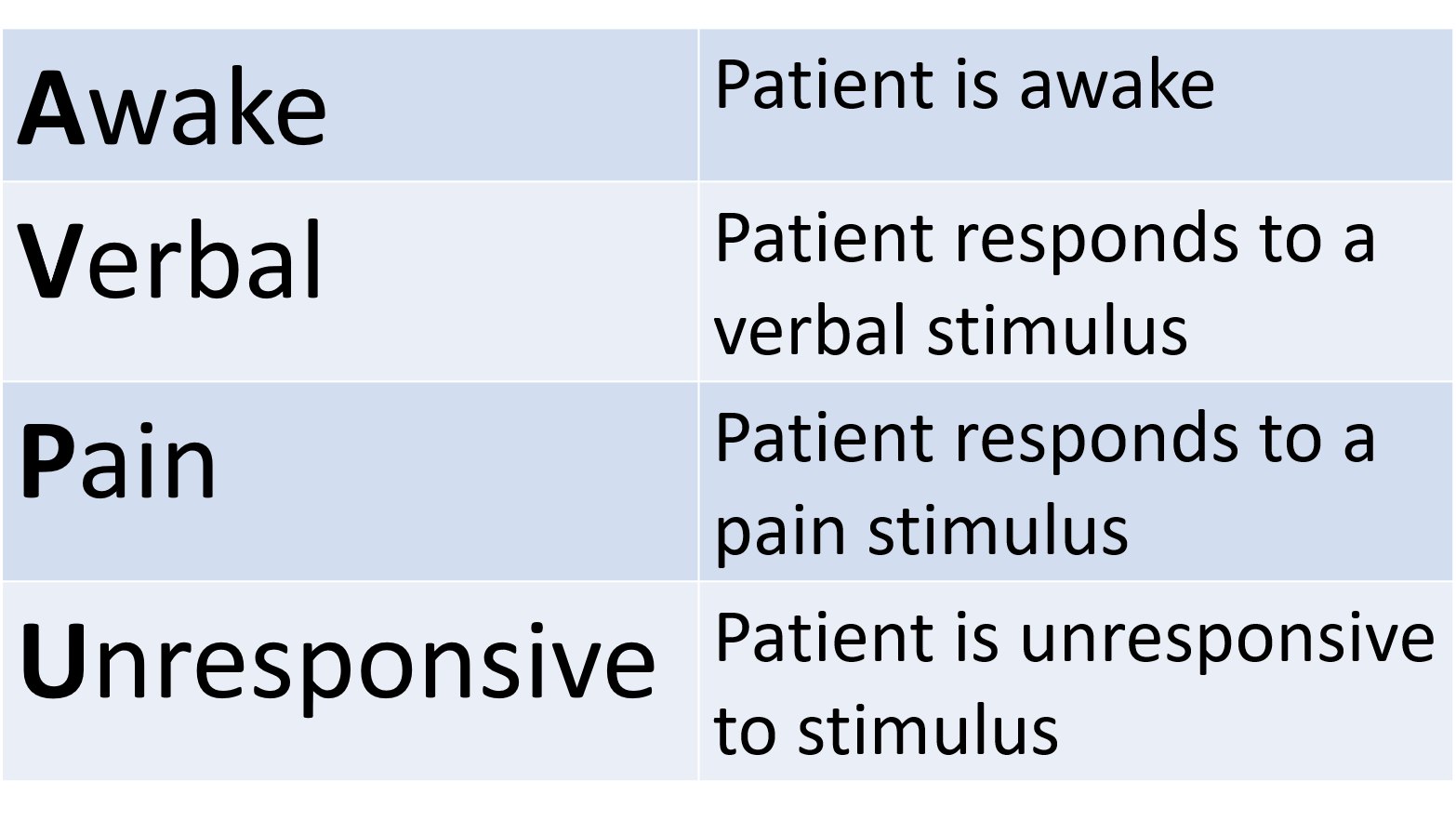


How To Use Avpu To Check Level Of Consciousness
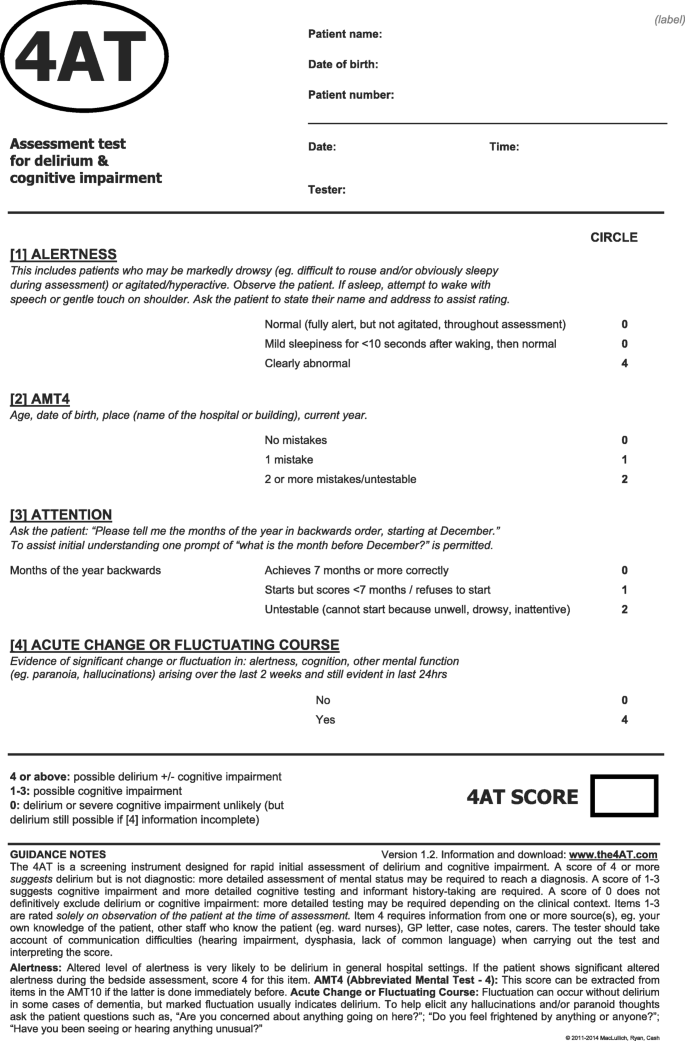


Delirium Detection In Older Acute Medical Inpatients A Multicentre Prospective Comparative Diagnostic Test Accuracy Study Of The 4at And The Confusion Assessment Method Bmc Medicine Full Text



Stroke Examination Tools Careercert
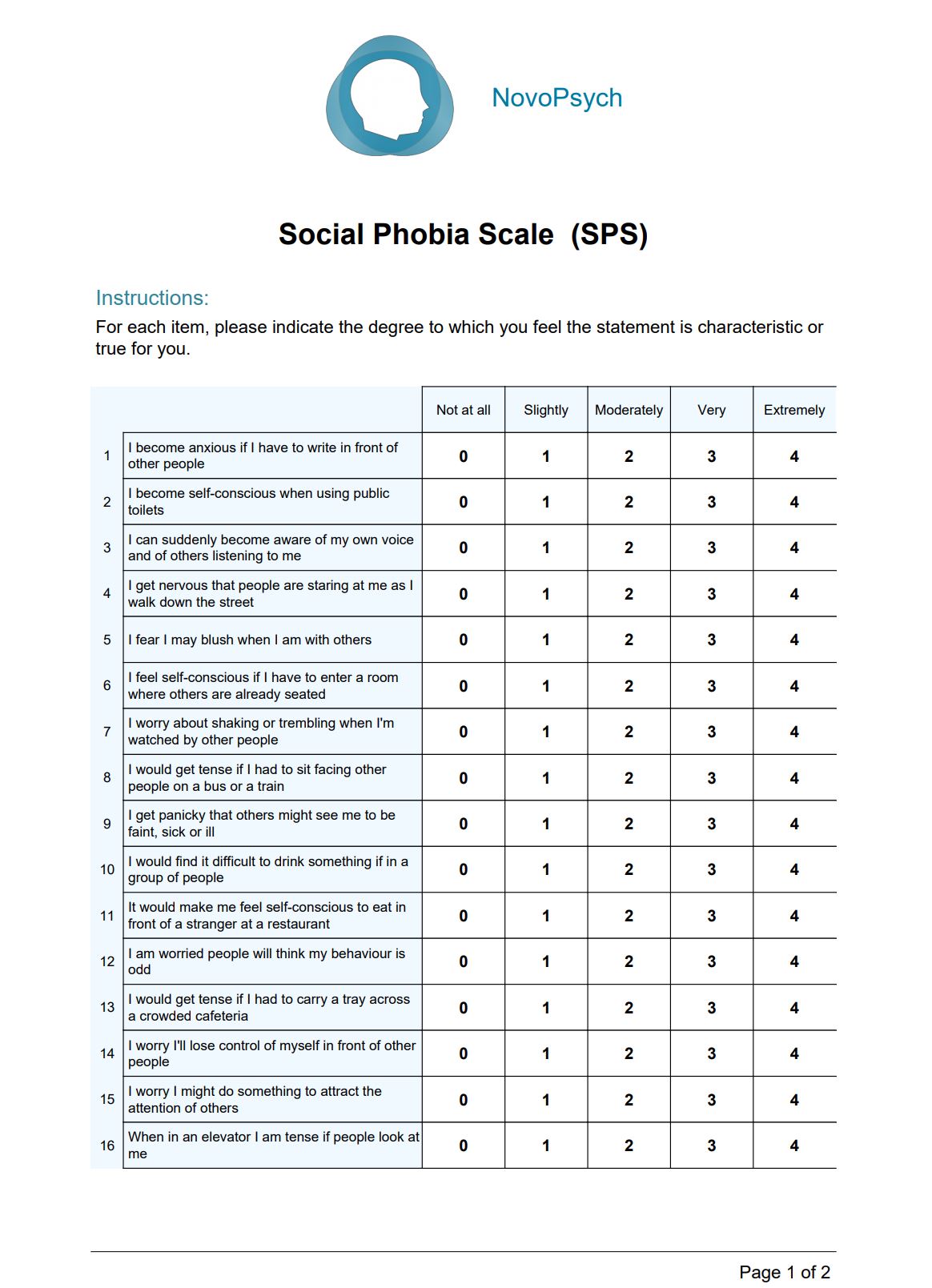


Social Phobia Scale Sps Novopsych
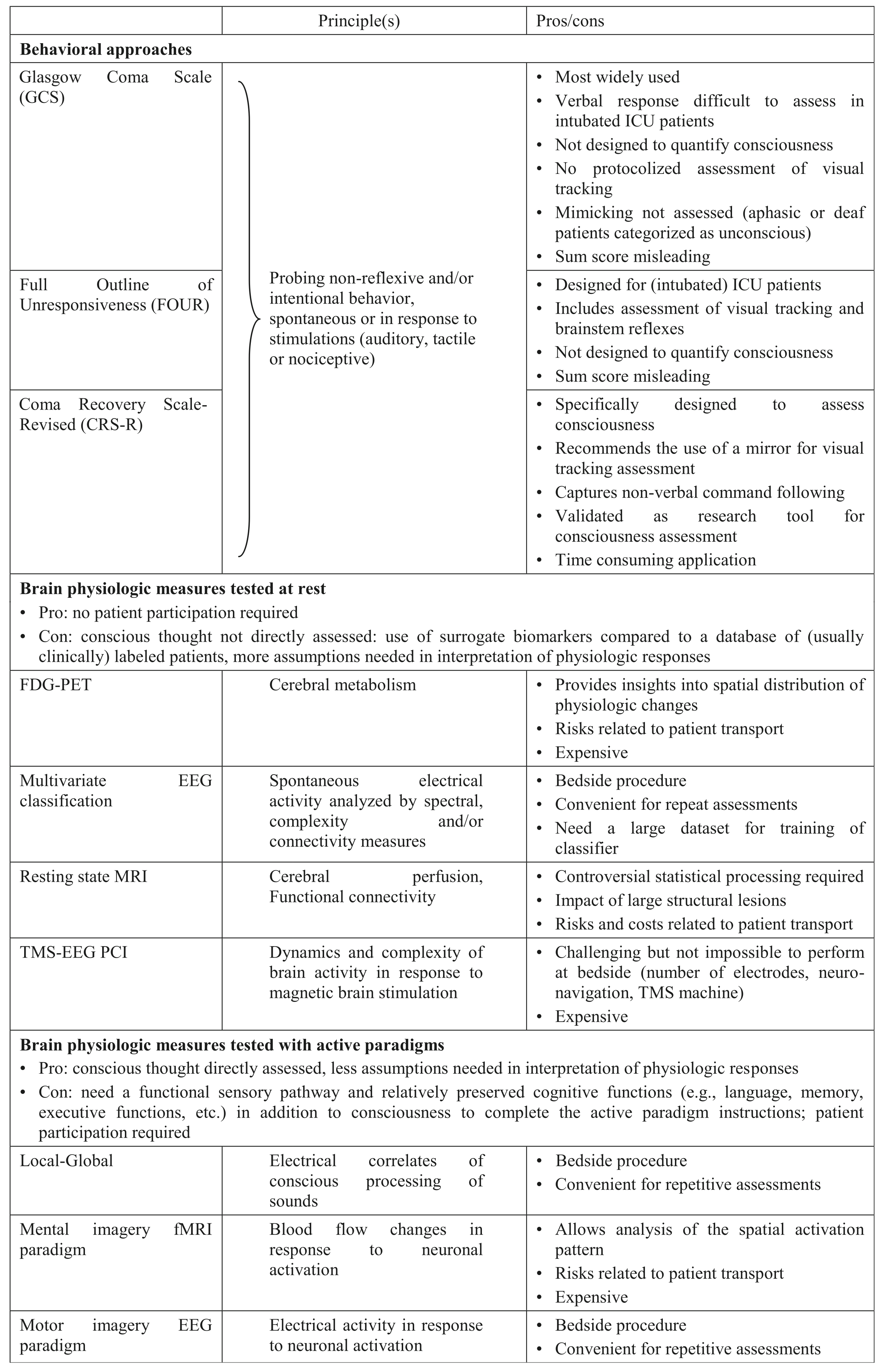


Assessment Of Consciousness In The Icu



Ten Point Guide To Mental State Examination Mse In Psychiatry
/what-is-orientation-and-how-is-it-affected-by-dementia-98571_final-477464376f7846f4ba4db1340d142bca.jpg)


What Does Oriented X1 X2 X3 And X4 Mean In Dementia



5 Free Cognitive Assessments For Occupational Therapists Myotspot Com



Levels Of Consciousness Assessment For Nurses Loc Youtube



Glasgow Coma Scale Medictests
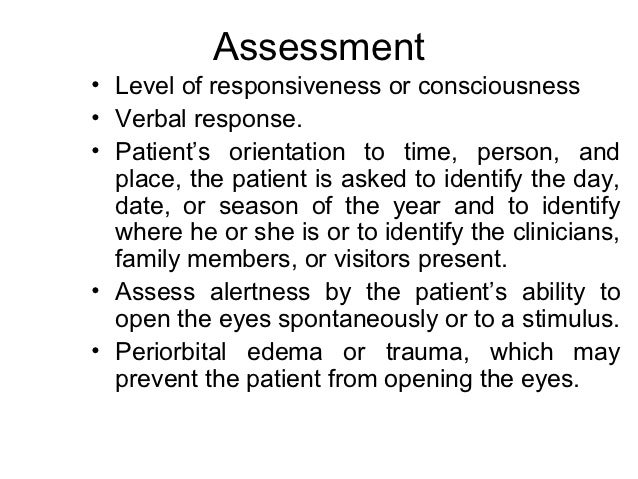


Altered Level Of Consciousness
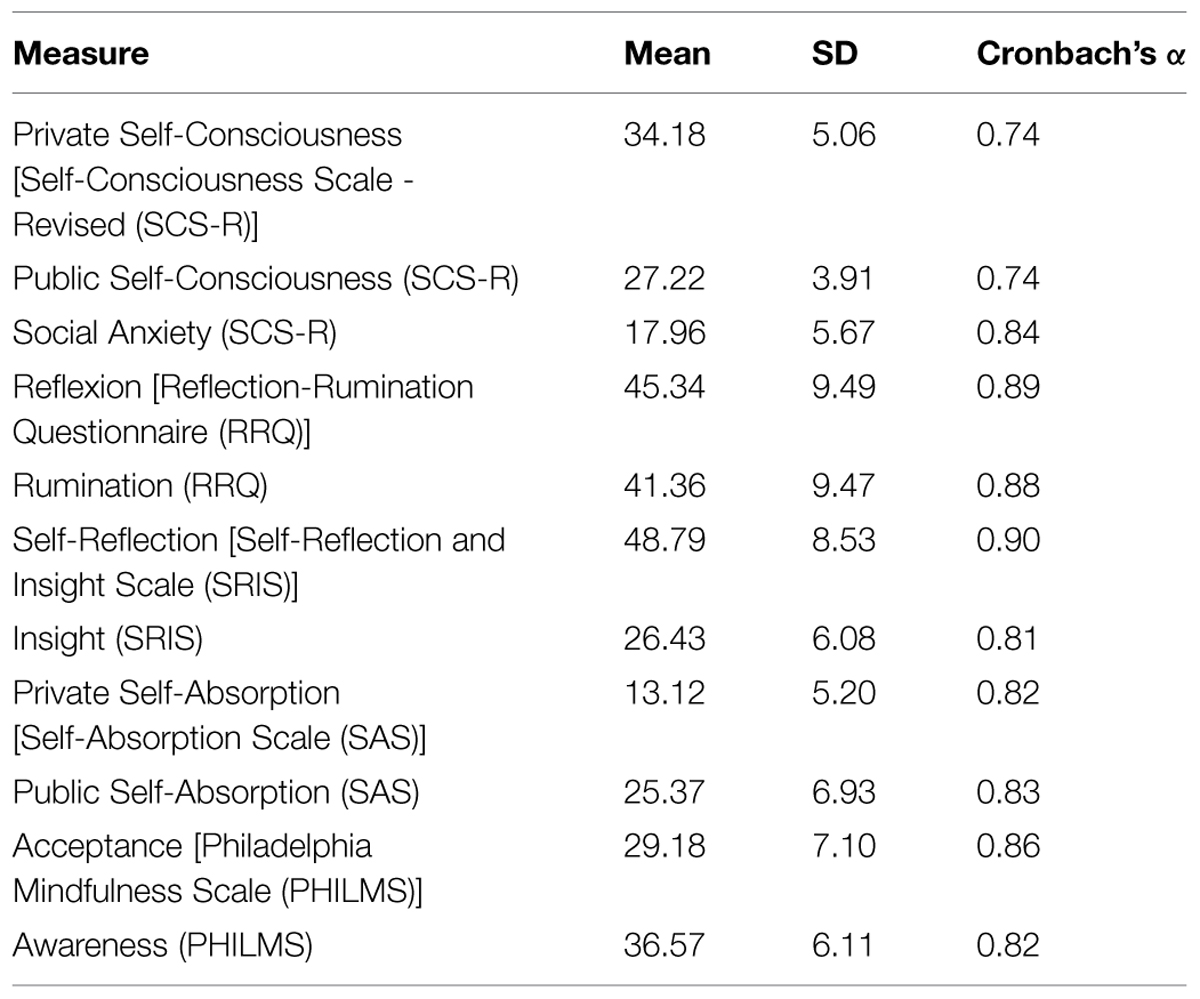


Frontiers Self Consciousness Concept And Assessment In Self Report Measures Psychology
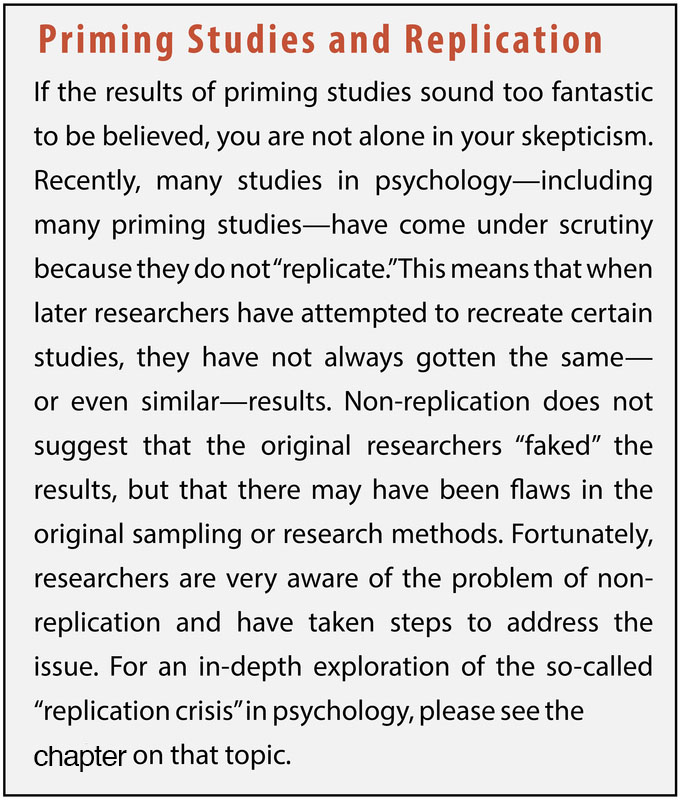


7 1 States Of Consciousness Introduction To Psychology



Sample Practice Exam 30 January 18 Questions And Answers Studocu



Glasgow Coma Scale Medictests



8 Causes Of Altered Mental Status In The Elderly



Neurological Assessment And Gcs



Can Lab Grown Brains Become Conscious



Avramov S Scale To Assess The Level Of Consciousness 16 Download Table



6 Success Steps For Diagnosing Altered Level Of Consciousness


Disability For Primary Survey
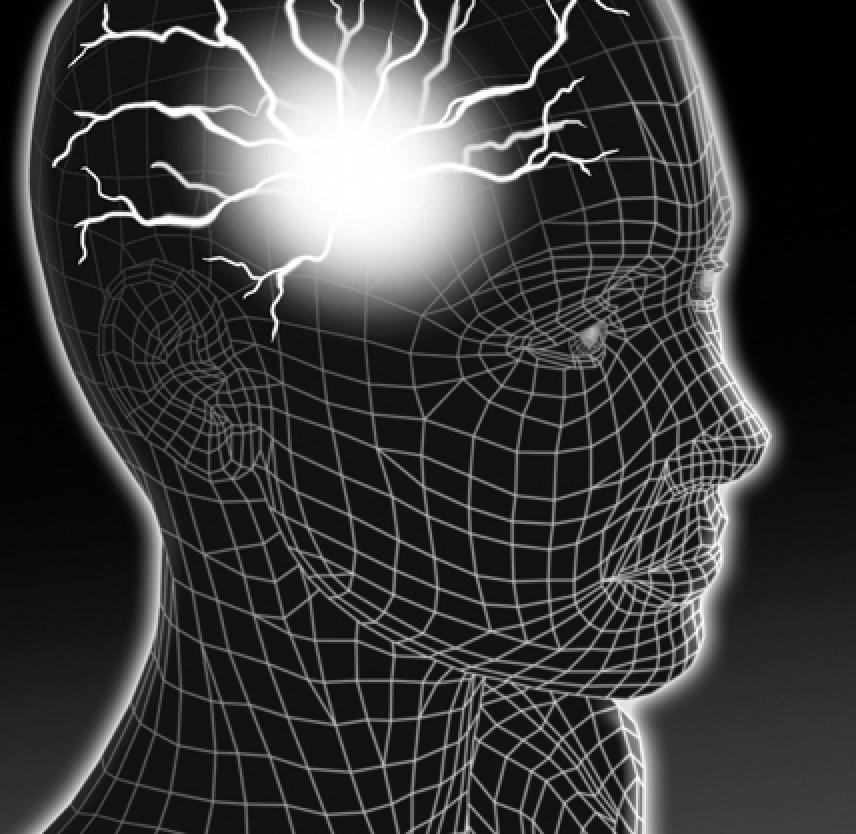


What Is The Glasgow Coma Scale Brainline



Neurological Assessment Ed Areyouprepared



Past The A B C 39 S Of First Aid You Have S A M P L E To Ask And A Few More Items



The Conscious Competence Ladder Learning Skills From Mindtools Com



How To Treat Altered Level Of Consciousness Emergencies Unitek Emt
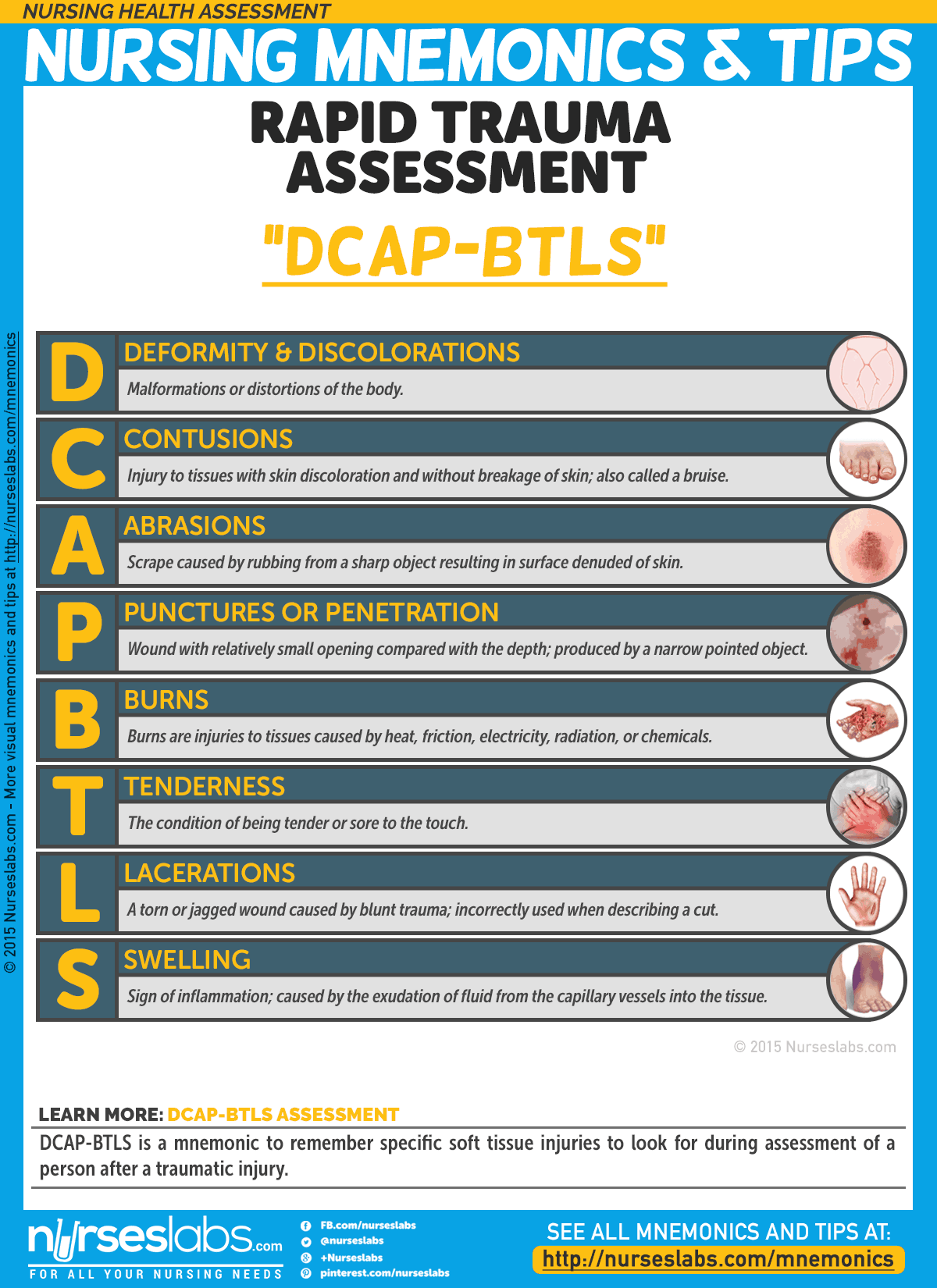


Nursing Health Assessment Mnemonics Tips Nurseslabs



Glasgow Coma Scale Flow Chart A Beginner S Guide British Journal Of Nursing



Levels Of Consciousness Assessment For Nurses Loc Youtube



What Is The Nih Stroke Scale Nihss Score Saebo



Level Of Consciousness 101 The Mountain Medic



Assessing The Conscious Level In Infants And Young Children A Paediatric Version Of The Glasgow Coma Scale Semantic Scholar


Coma Scales A Historical Review



Guidelines For A Brief Neurological Nursing Assessment In Acute Care A Literature Review Semantic Scholar



Levels Of Consciousness Decoded Straight A Nursing






The Confusion Assessment Method In The Icu Cam Icu



Glasgow Coma Scale Gcs How To Assess Gcs Geeky Medics
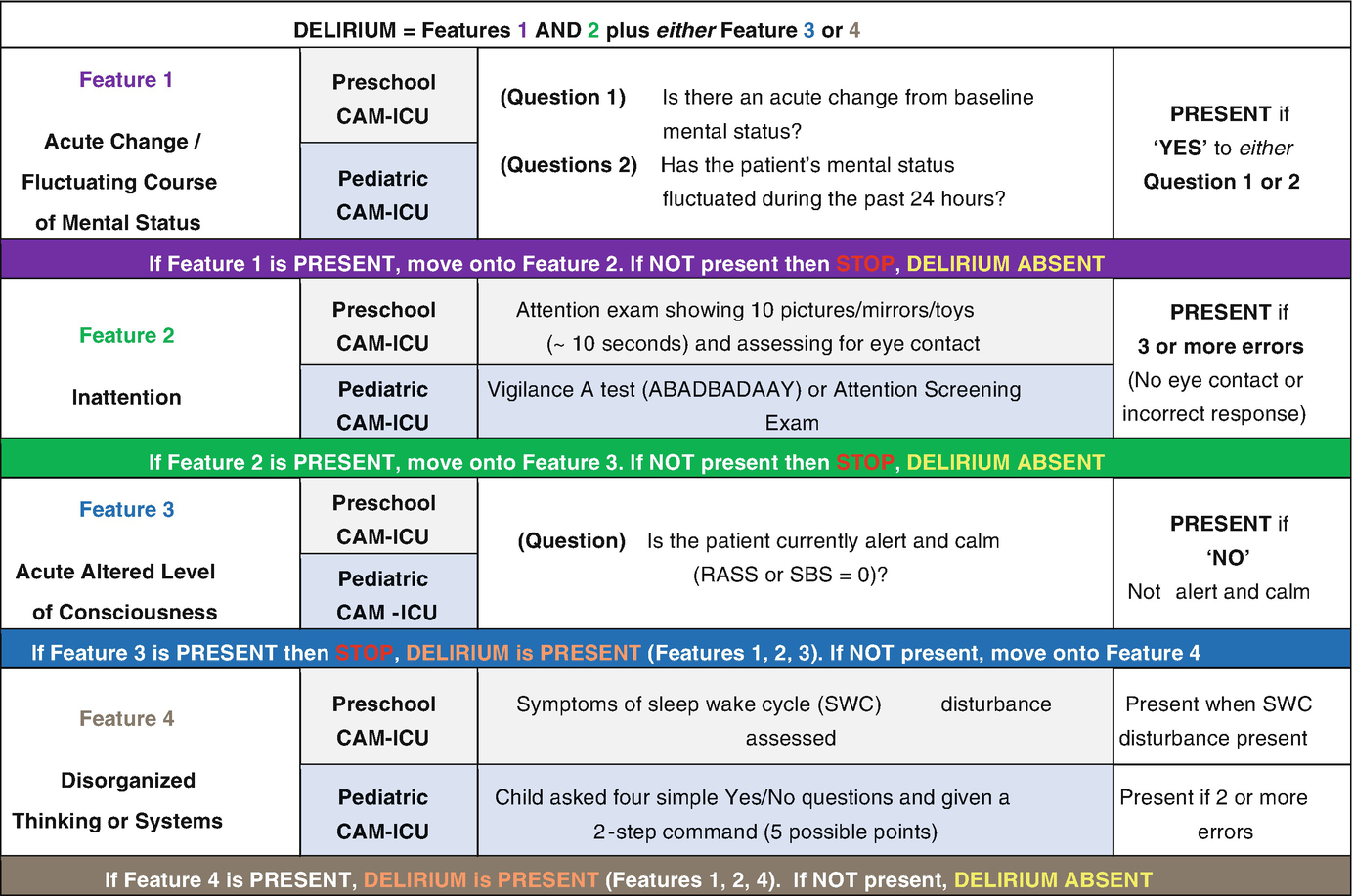


Pediatric Delirium Assessment Prevention And Management Springerlink



Solved 152 Unit 3 Nursing Basies Part 2 Connection Quest Chegg Com



Glasgow Coma Scale Flow Chart A Beginner S Guide British Journal Of Nursing
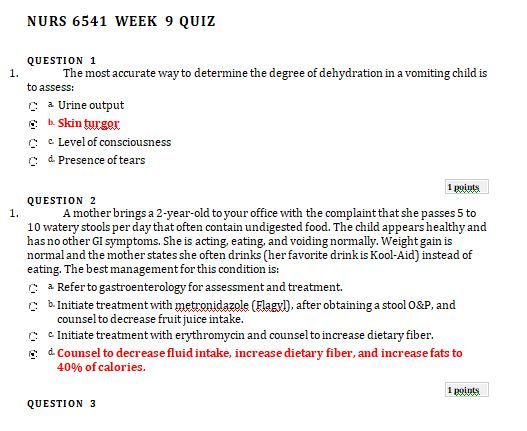


Nurs 6541 Week 9 Quiz 2 Question And Answers Instant Download This Or That Questions Quiz Question And Answer



Quiz Worksheet Consciousness Levels Vocabulary Study Com
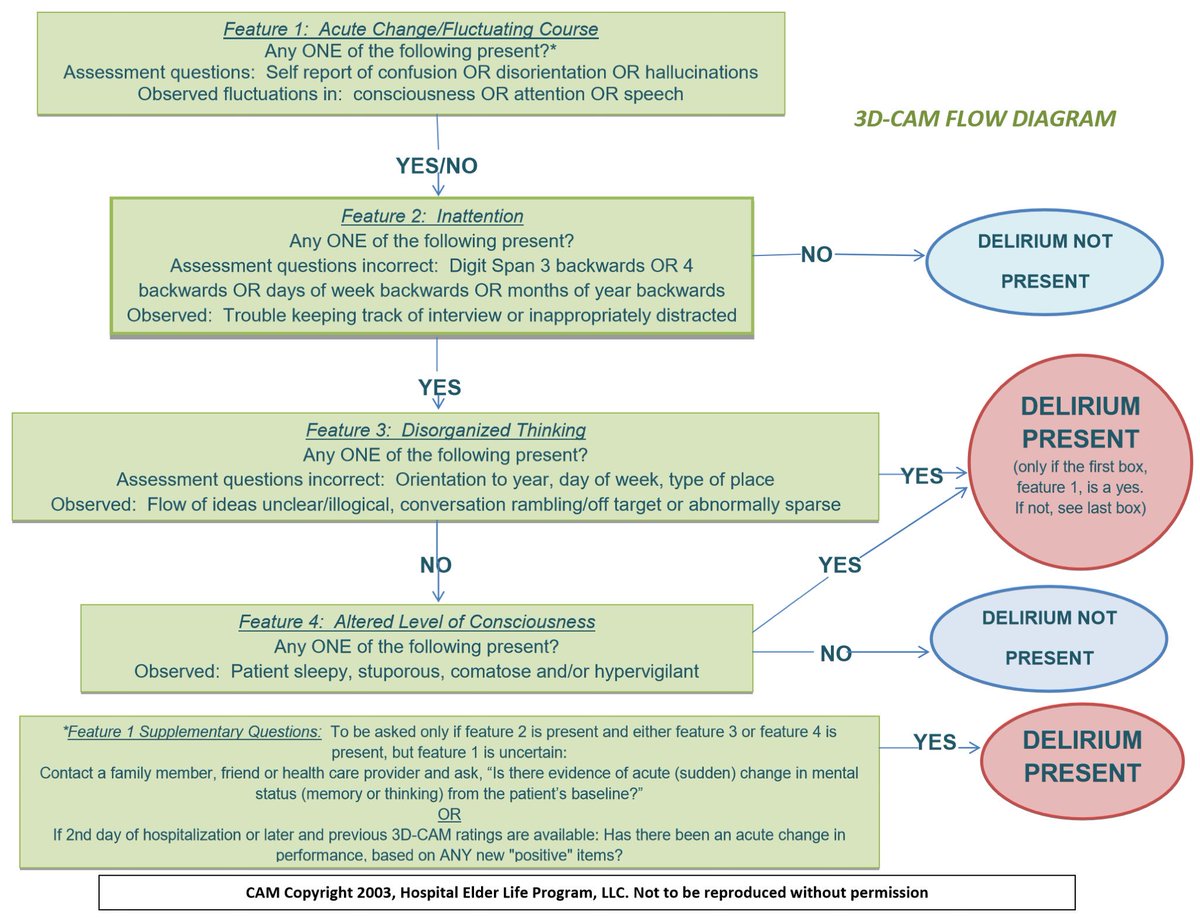


Sophia Hayes Md Fast Scale For Dementia
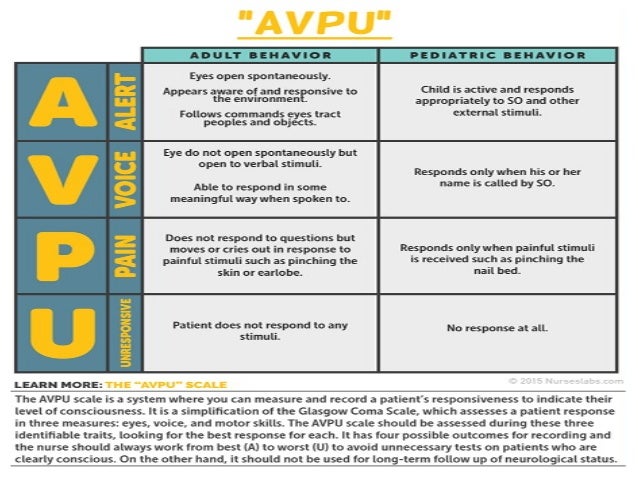


Assessment Of Consciousness
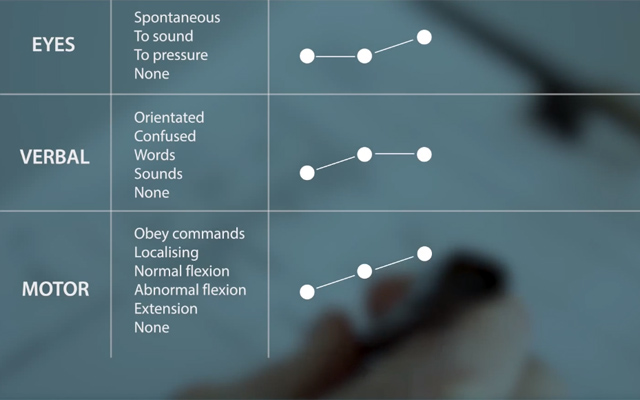


Glasgow Coma Scale



Ace The Assessment



The Neuroscience Of Consciousness Stanford Encyclopedia Of Philosophy



Medictests Com Quick Reference Level Of Consciousness Assessment For Adults And Peds Facebook



The Neuroscience Of Consciousness Stanford Encyclopedia Of Philosophy



First Aid Acronyms Explained Avpu First Aid Training Cooperative



1 Neurological Assessment At The End Of This Self Study The Participant Will 1 Describe The Neuro Nursing Assessment 2 List 5 Abnormal Findings In A Neuro Ppt Download



No comments:
Post a Comment